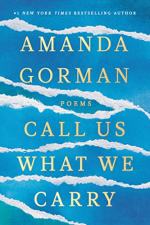|
This section contains 558 words (approx. 2 pages at 400 words per page) |

|
Call Us What We Carry Summary & Study Guide Description
Call Us What We Carry Summary & Study Guide includes comprehensive information and analysis to help you understand the book. This study guide contains the following sections:
This detailed literature summary also contains Quotes and a Free Quiz on Call Us What We Carry by Amanda Gorman.
The following version of this book was used to create the guide: Gorman, Amanda. Call Us What We Carry. Penguin Random House LLC, 2021.
Amanda Gorman's Call Us What We Carry is a collection of 70 poems. The enclosed poems are organized into seven titled sections which appear in the following order: "Requiem," "What a Piece of Wreck Is Man," "Earth Eyes," "Memoria," "Atonement," "Fury & Faith," and "Resolution." These overarching sections grant the collection a neat scaffolding and progression. They also help the reader to navigate between the author's evolving thematic explorations. Each poem in the collection employs its own unique form, style, and tone. The following summary, however, embraces a more streamlined mode of explaination. The summary relies upon the present tense, and traces the collection's primary and recurring thematic interests.
"Requiem" contains 12 poems. The poems in this section centralize the 2020 COVID-19 era. The speakers of the enclosed poems consider the ways in which "Distance can / Distort our deepest / Sense / Of who / We are, / Leave us / Warped / & wasted / As winter's Wind" (7). Although the 2020 lockdown, social distancing, and quarantining were necessary to survival throughout the pandemic, these measures also augmented the individual's feelings of isolation and loneliness. Throughout the section, the author repeatedly re-contextualizes these notions in a range of poetic forms and voices. In this way, she is able to capture both individual and collective experiences during this distinct and historic era.
"What a Piece of Wreck Is Man" contains nine poems in total. These pieces embrace increasingly inventive forms and structures. "Essex I," for example, appears on the page in the form of a whale. Using this playful structure allows the author to enact her explorations concerning the cultural devastation suffered during the pandemic era. The poems that follow make further allusions to whaling ships and to whales, underscoring the parallel the author is making between America and a ship, the pandemic and an attacking whale.
"Earth Eyes" contains seven poems. These works introduce references to climate change and to generational trauma. The enclosed pieces also deal with issues of segregation and prejudice throughout American history.
The section "Memoria" contains six poems. The pieces found in this section consider notions of "collective amnesia & / collective remembrance," as referenced in the piece "Pre-Memory" (78). Throughout these works, the author explores the ways in which shared experiences and memories might foster unity and solidarity. While the past might feel distant, the author underscores its omnipresence.
In the section "Atonement," the author presents 17 erasure poems. In the section's opening piece, "Erasure," the author explains that these poetic forms are meant "to enhance, evoke, / explore, expose the bodies, the truth, the voices that have / always existed but have been exiled from history & the imagination" (90). In each piece that follows, the author has taken a historical document, letter, or journal entry and reinvented it. By inhabiting the perspectives of the original documents' authors, Gorman is able to access the once buried lives and experiences of marginalized individuals.
"Fury & Faith" contains 5 poems in total. These pieces centralize issues of police violence and social justice. The enclosed works promote notions of change, protest, and freedom.
The final section, "Resolution," contains 14 poems. As the collection nears its end, the enclosed pieces pursue a resolution to the author's overarching thematic considerations. Repeating references to beginnings and endings gradually evolve into declarations of hope and change.
Read more from the Study Guide
|
This section contains 558 words (approx. 2 pages at 400 words per page) |

|



